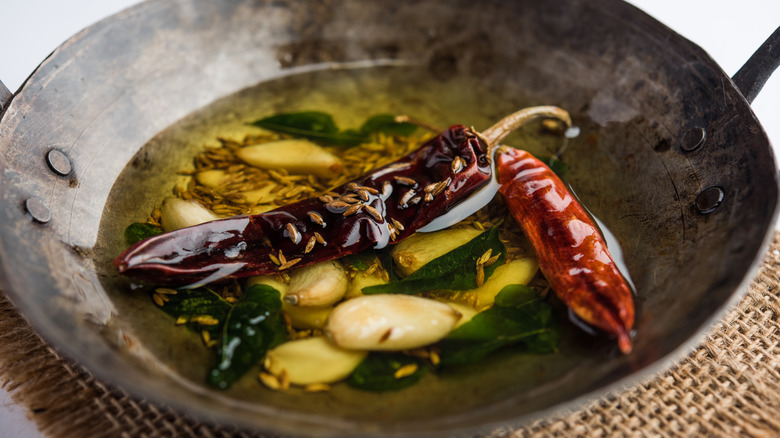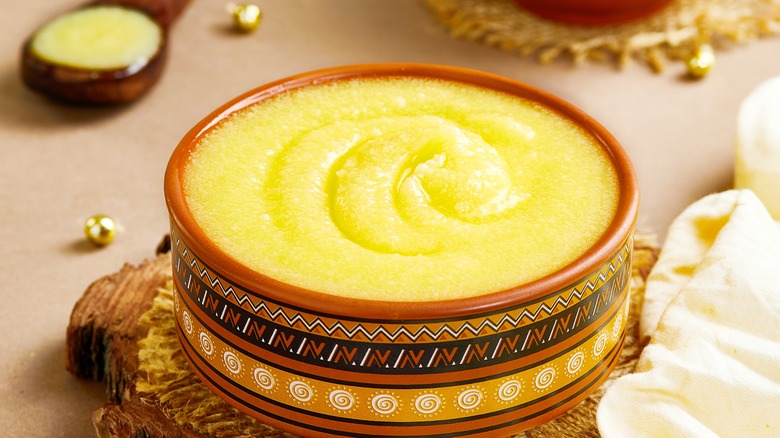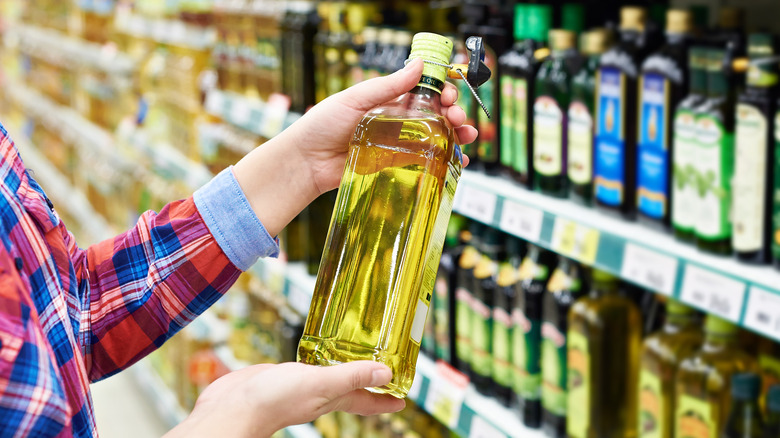What's The Best Fat To Use When Making Tadka?
Known by different names depending on which state you go to, the underlying mechanism behind learning how to make an Indian tadka is the same: Pick a fat, pick the appropriate spices and herbs, and then start frying. Tadka, which is the tempering of spices in hot oil, is one of the culinary techniques that gives Indian cooking its unique depth.
But the first question that pops up for many is what kind of fat should be used in a tadka? As it turns out, the answer mostly depends on the type of Indian cuisine you're making. For instance, if you're making khaman dhokla, a dish found in the western state of Gujarat, a neutral oil such as canola oil may be used — though other more flavor-forward fats are favored elsewhere.
Often, the fat of choice is a result of what is locally available, becoming embedded in the cuisines of each region accordingly. For example, it's unheard of to cook Punjabi food without tempering spices, onions, garlic, and herbs in ghee and adding a scoop of ghee to the dish before serving as well.
Fats used for tadka in popular regions of India
While Indian food is defined by its use of spices, the fat that is used as a base to temper these spices lends just as much flavor to the food. Northern Indian states love their mustard oil, which is often used when tempering spices for a curry called sarson ka saag, made of mustard greens — the oil's pungent taste complements the peppery greens well. While Indians have long used mustard oil in cooking, it isn't widely sold in the U.S. Ghee also works for tempering this dish because it doesn't have as strong of a taste as mustard oil and is still commonly used in northern Indian cooking. Similarly, you could use either fat in a tadka for chole bhatura, another North Indian dish.
In southern Indian regions, palm trees are abundant, naturally lending to cooks' tendencies to gravitate towards coconut oil. Adding shredded coconut to dishes or making a coconut raita on the side is common, so tempering spices in coconut oil to add to these dishes is a good idea as it will amplify the coconut flavor.
Southern Indian regions also like to finish their dishes with sesame oil tadka. This benne seed oil-based tadka is used in a traditional dish called rasam, which is a tangy lentil soup containing tamarind and spices.
What tadka fats bring to your cooking
While tadkas add immense flavor to a dish, fortunately, the fats used to make them are generally pretty nutritious. Sesame oil is high in antioxidants, vitamin E, and other components that are thought to help fight free radicals in the body. Sesame oil is also high in polyunsaturated fats such as omega-3 and omega-6, which have been studied in regards to cancer prevention and diseases of the heart. Mass General Brigham notes that coconut oil similarly has potential cardiovascular benefits, as does mustard oil, which also boasts antibacterial properties, according to Healthline.
Finally, ghee is rich in vitamins like D, K, A, and E in addition to antioxidants, and has been used in India for millennia. If you can't figure out which fat to use for your tadka, you'll never go wrong with ghee.
While the health benefits are the cherry on top, tadka boasts robust flavors due to its ability to "release [spices'] essential oils, thus making their flavors more aromatic," said celebrity chef Maneet Chauhan on Instagram. It's why using the right fat for tadka is so important, since the flavors of a dish are that much more heightened with each spoonful added. So if you add a tadka meant for rasam, a southern Indian dish, to northern sarso ka saag, you may find the taste to be clashing. With a bit of practice, you'll be well on your way to matching the ideal tadkas with their corresponding dishes.


